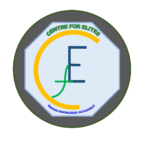In the realm of research, the interview serves as a critical tool for data collection, providing depth and nuance that other quantitative methods may overlook. Researchers across disciplines utilize interviews to explore complex human experiences, motivations, and behaviors. Understanding the different types of interviews is essential for researchers wishing to choose the most appropriate method for their studies. This blog post aims to provide a comprehensive exploration of the various types of interviews used in research, their advantages, disadvantages, and contexts in which they are best employed.

1. Structured Interviews in Research
Structured interviews are characterized by a formalized approach where the interviewer asks a specific set of predetermined questions in a fixed order. This type of interview is most commonly employed in quantitative research, where standardization is crucial for ensuring comparability and reliability of data.
Advantages:
- Consistency: Each participant is asked the same questions in the same manner, which minimizes variability.
- Ease of Analysis: The structured format lends itself well to statistical analysis, making it easier to quantify responses.
Disadvantages:
- Lack of Depth: While structured interviews can yield a wealth of data, they often miss the subtleties and complexities of participants’ viewpoints.
- Limited Flexibility: If a participant brings up an interesting topic or idea that isn’t included in the questioning framework, the interviewer may not have the opportunity to explore it further.
Best Context:
Structured interviews are particularly suited for large-scale surveys or studies that require data comparison, such as market research or demographic studies.
Semi-Structured Interviews
Semi-structured interviews offer a blend of structured and unstructured techniques. While they maintain some fixed questions to ensure all key topics are covered, interviewers also have the flexibility to probe deeper based on participants’ responses.
Advantages:
- Flexibility: Interviewers can adapt their questions and follow up on interesting points, allowing for richer data.
- Balance: This approach strikes a balance between structure and spontaneity, helping to guide conversations while still allowing for exploration of emergent themes.
Disadvantages:
- Inconsistency: Variability in how interviews are conducted can make data comparison more challenging.
- Time-Consuming: The need for a deeper engagement can lead to longer interviews and more extensive data collection periods.
Best Context:
Semi-structured interviews are ideal for qualitative research where understanding individual perspectives is crucial, such as in social research or exploratory studies.
3. Unstructured Interviews
Unstructured interviews are the most open-ended format, featuring few or no predetermined questions. They are more like a guided conversation, where the interviewer encourages the participant to speak freely about their experiences and insights.
Advantages:
- Rich, In-Depth Data: This format allows participants to express their thoughts without constraints, often leading to unexpected insights and revelations.
- Naturalistic Interaction: The conversational nature often leads to a more relaxed atmosphere, which can make participants more forthcoming.
Disadvantages:
- Data Analysis Challenges: The open-ended responses can be difficult to analyze systematically, leading to potential biases during interpretation.
- Interviewer Skills Required: An unstructured format demands a skilled interviewer who can navigate conversations effectively without leading or steering them in a biased direction.
Best Context:
Unstructured interviews are particularly useful in ethnographic research, life history studies, and areas where nuanced understanding of human experience is vital, such as psychology or cultural studies.
4. Focus Group Interviews
Focus groups involve guided discussions with a small group of participants, usually led by a facilitator. This method allows for the exploration of collective perceptions and dynamics, making it distinct from one-on-one interviews.
Advantages:
- Dynamic Interaction: The group setting encourages interaction among participants, potentially leading to richer dialogue and varied perspectives.
- Efficient Data Collection: Researchers can gather a wealth of information from multiple individuals simultaneously.
Disadvantages:
- Groupthink Risks: The presence of other participants may lead to conformity, with some individuals unwilling to voice dissenting opinions.
- Facilitation Challenges: Skilled moderation is essential to ensure balanced contributions from all group members and to prevent dominant personalities from overshadowing quieter participants.
Best Context:
Focus groups are often used in market research to gauge consumer opinions, in social research to understand community perspectives, or in program evaluation to collect feedback from stakeholders.
5. Contextual or Observational Interviews
Contextual or observational interviews involve engaging with participants while they are in their natural environments, offering insights into how context affects behavior and decision-making. This approach allows researchers to observe participants in real-time, often enhancing the richness of collected data.
Advantages:
- Real-World Insights: Observing participants in their natural setting can reveal behaviors and interactions that formal interviews might miss.
- Immediate Contextualization: Researchers can ask specific questions related to the observed behavior, enriching the discussion.
Disadvantages:
- Variability in Interaction: Observational studies can be unpredictable, leading to potential biases based on the researcher’s presence.
- Data Complexity: The combination of observational data and interview responses can create complex datasets that are challenging to analyze.
Best Context:
This method is especially beneficial in qualitative studies focused on user experience, design research, and any field where understanding real-world behavior is essential.
Conclusion: Towards Appropriate Types of Interviews
Selecting the appropriate types of interviews is an integral component of the research design process. Each format—from structured to unstructured, from individual to focus group—offers distinct advantages and challenges that cater to different research goals and contexts. By understanding these methodologies, researchers can tailor their data collection strategies to enhance the depth, reliability, and richness of their findings.
In applying these insights, researchers can better navigate the complexities of human behavior and social dynamics, contributing to a more nuanced understanding of the world around us. Whether you are conducting academic research, market analysis, or any other form of inquiry, recognizing the strengths and limitations of each interview type will ultimately empower you to design more effective and insightful research studies.
Discover more from Umuco Nyarwanda
Subscribe to get the latest posts sent to your email.
